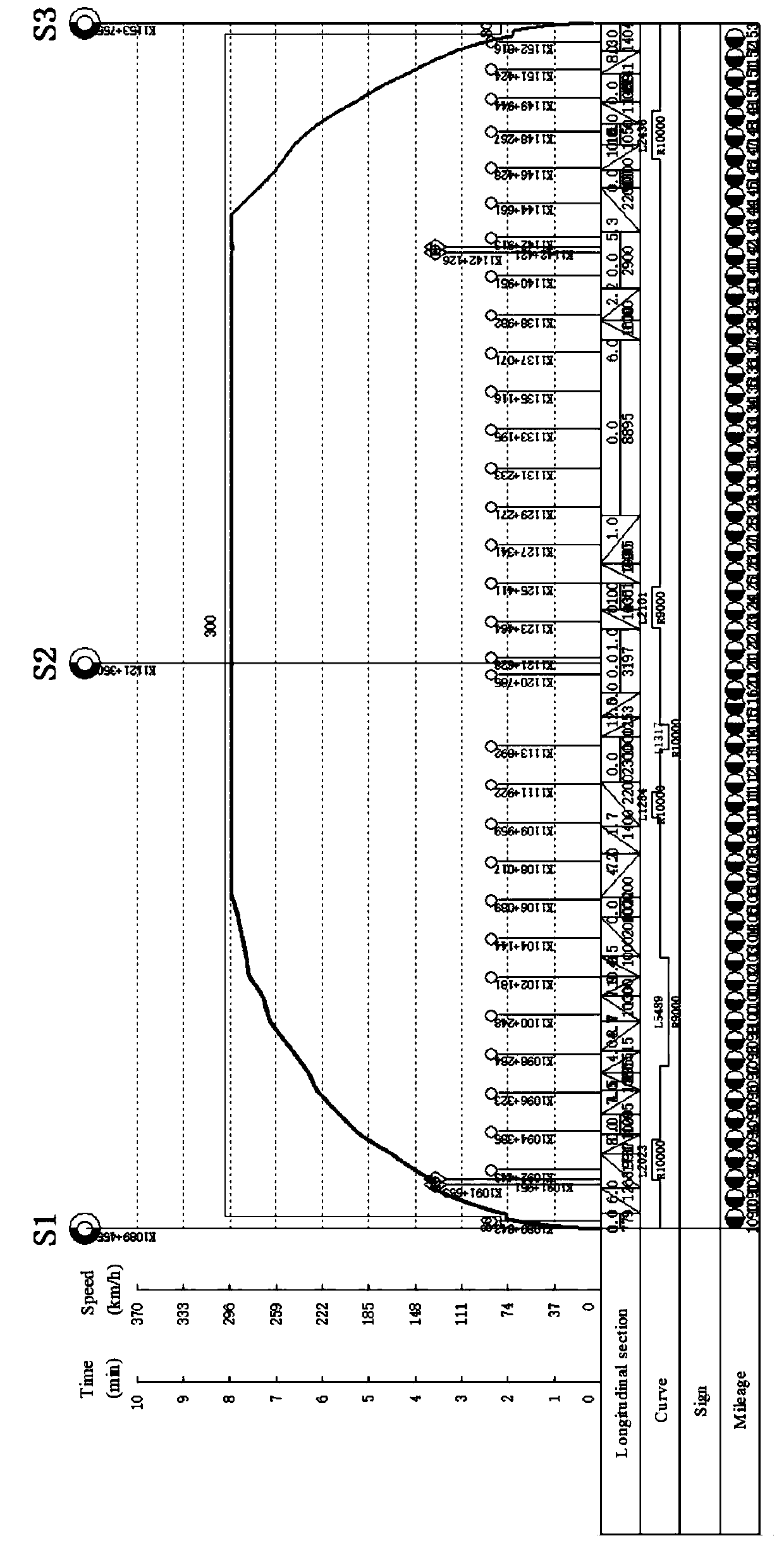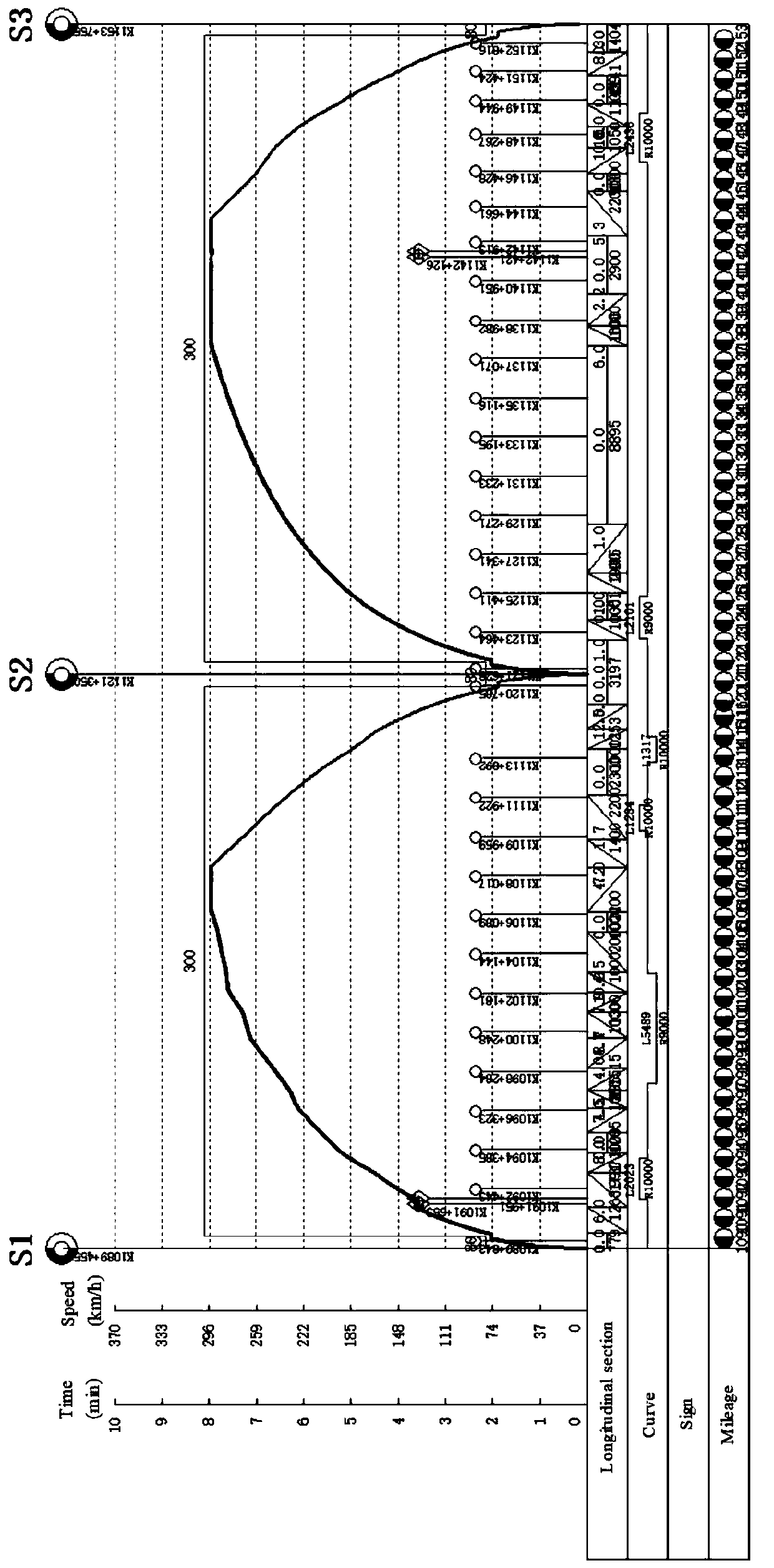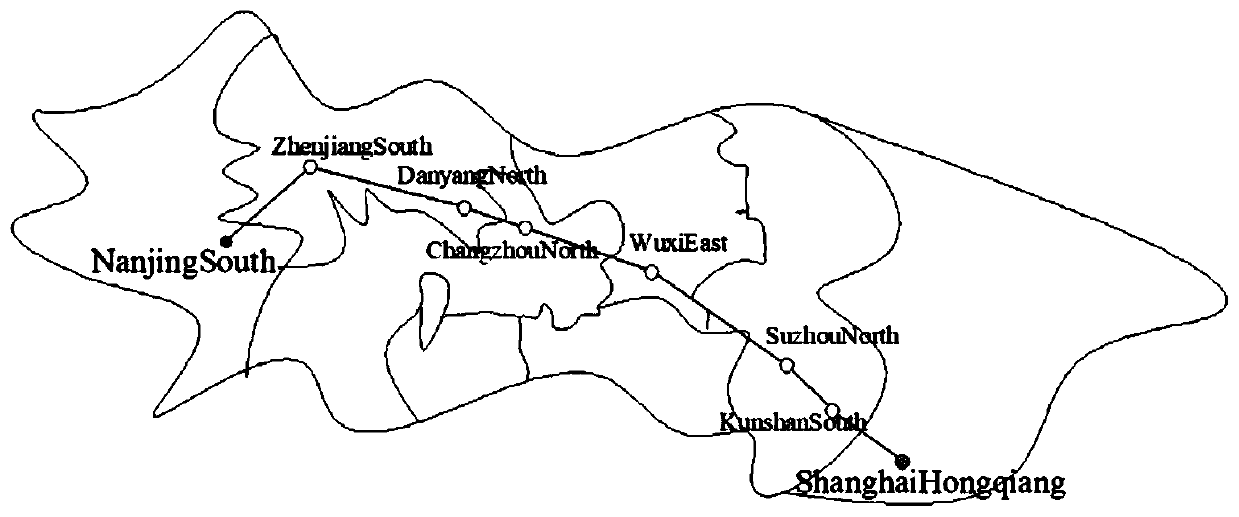Energy-saving high-speed railway train working diagram adjusting method based on stop scheme
A technology for train operation diagrams and high-speed railways, which can be used in instruments, data processing applications, forecasting, etc., and can solve problems such as not considering actual line conditions.
- Summary
- Abstract
- Description
- Claims
- Application Information
AI Technical Summary
Problems solved by technology
Method used
Image
Examples
Embodiment 1
[0100] The method for adjusting the high-speed railway train diagram based on the energy saving of the stop scheme includes the following steps:
[0101] 1) Analyze the travel situation of passengers on holidays and non-holidays, and determine the stop rate of each station according to the average daily passenger volume of each station;
[0102] 2) Use the traction calculation software to calculate the increased energy consumption value of the high-speed railway train stops at each intermediate station;
[0103] 3) Under the constraint of satisfying the safety interval and stop time of high-speed railway trains, establish a dual-objective model with the shortest total travel time and energy saving;
[0104] 4) Using the fuzzy mathematical programming method to solve the dual-objective model;
[0105] 5) According to the relationship between the energy consumption value and the stop plan, a suggestion for adjusting the stop plan based on energy saving is given.
[0106] In st...
Embodiment 2
[0166] Based on embodiment 1, this embodiment selects the non-holiday Beijing-Shanghai high-speed railway in Nanjing South-Shanghai Hongqiao section (such as image 3 Shown), this technical solution is described.
[0167] Specifically, it includes: a total of 20 high-speed trains (maximum speed 300km / h) in the down direction. The selected trains have stops at Nanjing South and Shanghai Hongqiao. Therefore, Nanjing South is used as the starting station and Shanghai Hongqiao is the final station. , namely: β 1 = 1, β 8 = 1; In addition, according to the safety interval standard of the existing timetable and the parameter values of the research case selected according to the passenger flow demand (as shown in Table 2), the train traction calculation software is used to calculate the distance between the trains in Zhenjiang South, Danyang North, Changzhou North, and Wuxi respectively. Parking at 6 intermediate stations in East, Suzhou North and Kunshan South increases energy c...
Embodiment 3
[0192] (1) Calculation of stop rate
[0193] For the calculation of stop rate, where is the daily average number of passengers arriving and departing at station s, that is, the average daily passenger volume of each station, and the average daily passenger volume of each station in the Nanjing South-Shanghai Hongqiao section of the Beijing-Shanghai high-speed railway (as shown in Table 7).
[0194] Table 7 Average daily passenger flow of each station
[0195]
[0196] In order to simplify the calculation process, the value of the passenger flow density k in this section is the average passenger flow density of the Beijing-Shanghai high-speed railway, which is 45.12 million people / km. According to the query on the 12306 official website, the number of high-speed trains operating in this section of the Beijing-Shanghai high-speed railway is 49, so I is taken as The value is 49. According to formula (1-1)
[0197]
[0198] Since Nanjing South Railway Station and Shangha...
PUM
 Login to View More
Login to View More Abstract
Description
Claims
Application Information
 Login to View More
Login to View More - R&D
- Intellectual Property
- Life Sciences
- Materials
- Tech Scout
- Unparalleled Data Quality
- Higher Quality Content
- 60% Fewer Hallucinations
Browse by: Latest US Patents, China's latest patents, Technical Efficacy Thesaurus, Application Domain, Technology Topic, Popular Technical Reports.
© 2025 PatSnap. All rights reserved.Legal|Privacy policy|Modern Slavery Act Transparency Statement|Sitemap|About US| Contact US: help@patsnap.com



